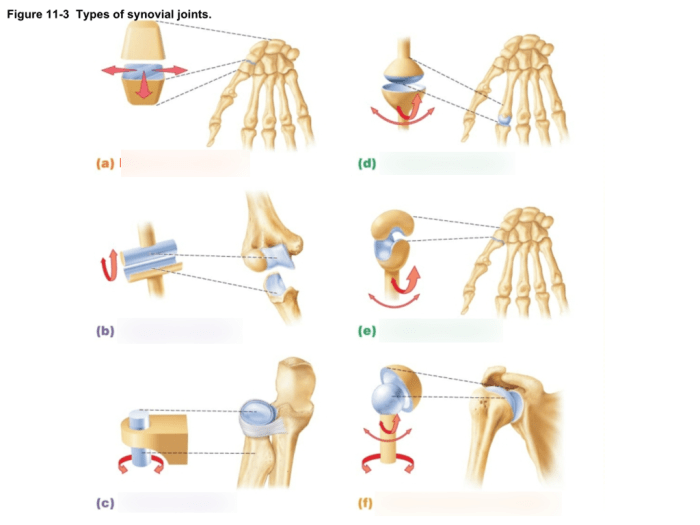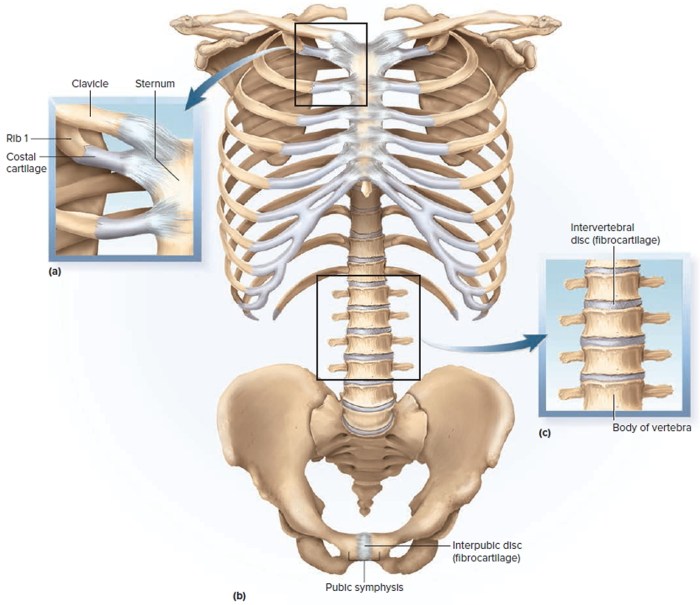Embark on an interactive journey with “Drag the Labels to Identify Synovial Joints,” an engaging learning experience that unveils the intricacies of synovial joint anatomy. Through a series of interactive tables and informative text, this exercise provides a comprehensive understanding of joint structure, function, and clinical significance.
Delving into the fascinating world of synovial joints, we’ll explore their diverse types, examine their unique characteristics, and uncover the essential role they play in human movement and overall well-being. Join us as we dissect the anatomy of synovial joints, unraveling the secrets that lie within these remarkable structures.
Anatomy of Synovial Joints: Drag The Labels To Identify Synovial Joints

Synovial joints are the most common type of joint in the body. They are characterized by a joint cavity filled with synovial fluid, which provides lubrication and nourishment to the joint. Synovial joints allow for a wide range of motion, including flexion, extension, rotation, and abduction.
Types of Synovial Joints, Drag the labels to identify synovial joints
There are six types of synovial joints:
- Ball-and-socket joint:This joint allows for a wide range of motion, including flexion, extension, rotation, and abduction. Examples of ball-and-socket joints include the shoulder and hip joints.
- Hinge joint:This joint allows for flexion and extension only. Examples of hinge joints include the elbow and knee joints.
- Pivot joint:This joint allows for rotation only. Examples of pivot joints include the atlanto-axial joint in the neck and the radioulnar joint in the forearm.
- Gliding joint:This joint allows for gliding movements only. Examples of gliding joints include the joints between the vertebrae and the joints between the carpal bones in the wrist.
- Saddle joint:This joint allows for flexion, extension, abduction, and adduction. Examples of saddle joints include the carpometacarpal joint of the thumb.
- Condyloid joint:This joint allows for flexion, extension, abduction, and adduction. Examples of condyloid joints include the metacarpophalangeal joints in the fingers.
Functions of Synovial Joints

Synovial joints provide a wide range of motion and flexibility to the body. They allow us to perform everyday activities such as walking, running, and reaching. Synovial fluid also plays an important role in joint lubrication and nourishment. It contains nutrients that are essential for the health of the joint cartilage and it helps to reduce friction between the bones.
Identification of Synovial Joints

Synovial joints can be identified by their anatomical landmarks and their mobility. Anatomical landmarks include the presence of a joint cavity, synovial membrane, and synovial fluid. Mobility is assessed by the range of motion that the joint allows.
To identify a synovial joint, follow these steps:
- Identify the anatomical landmarks.Look for the presence of a joint cavity, synovial membrane, and synovial fluid.
- Assess the mobility of the joint.Determine the range of motion that the joint allows.
- Compare the anatomical landmarks and mobility of the joint to the characteristics of synovial joints.If the joint has the anatomical landmarks and mobility of a synovial joint, then it is a synovial joint.
Clinical Applications

The identification of synovial joints is important in the diagnosis and treatment of joint disorders. For example, a synovial joint that is inflamed may be a sign of arthritis. A synovial joint that is unstable may be a sign of a ligament injury.
Understanding the anatomy of synovial joints also aids in surgical interventions and rehabilitation.
Essential Questionnaire
What are the different types of synovial joints?
Synovial joints are classified into six main types: plane, hinge, pivot, condyloid, saddle, and ball-and-socket joints. Each type exhibits unique structural features and allows for specific ranges of motion.
How does synovial fluid contribute to joint function?
Synovial fluid acts as a lubricant, reducing friction between joint surfaces during movement. It also nourishes the joint cartilage, providing essential nutrients for its maintenance and repair.
What is the clinical significance of synovial joint identification?
Accurate identification of synovial joints is crucial for diagnosing and treating joint disorders. It guides appropriate interventions, such as surgical procedures and rehabilitation programs, ensuring optimal patient outcomes.